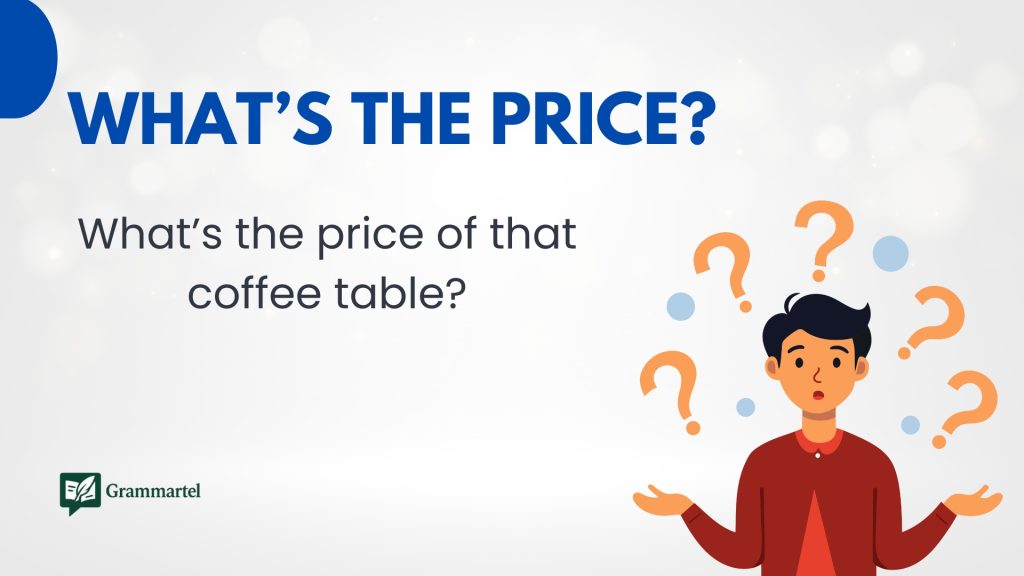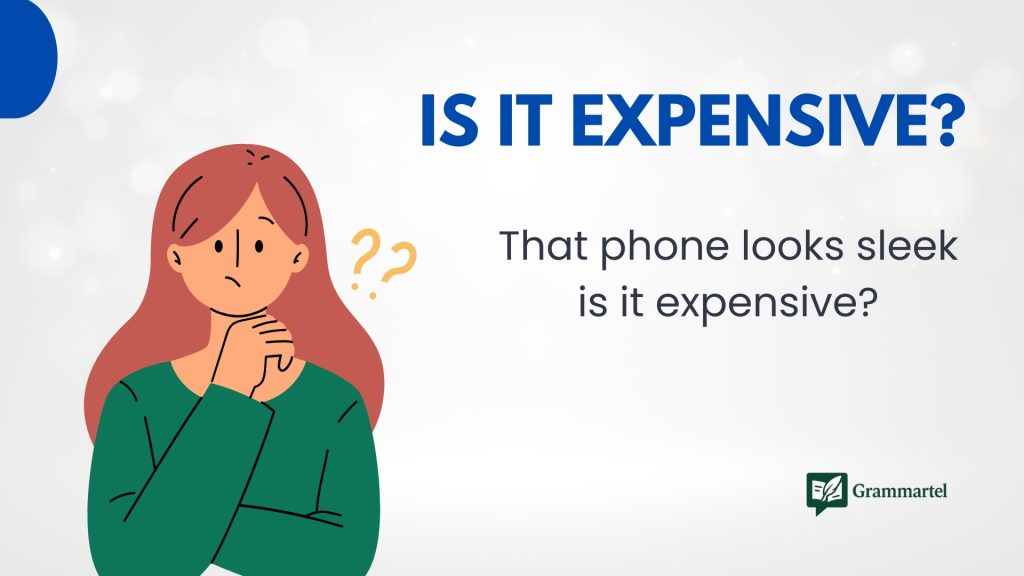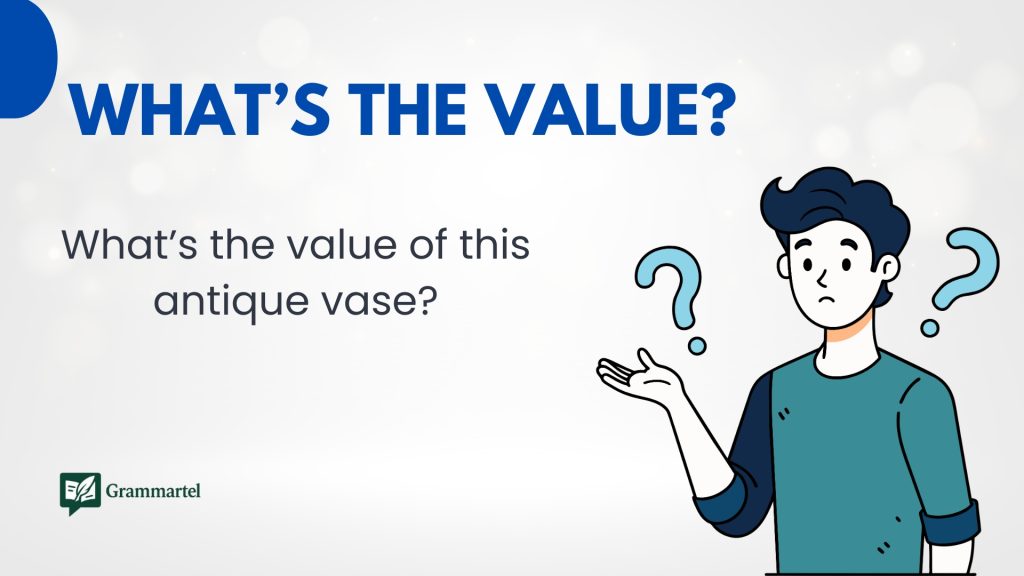Sometimes asking about a price or amount can feel a bit repetitive when all we say is “How much?” all the time. The good news? There are plenty of other ways to ask the same thing—whether you’re shopping, talking about time, or even checking details in a conversation. From casual phrases to polite questions, there’s a wide range of expressions you can use. In this guide, we’ll explore 40 different ways to say “How much,” along with clear examples so you can use them naturally in real situations.
What Does “How Much” Mean?
“How much” is a common question we use to ask about an amount or cost. It can be about money, time, effort, or even quantity. For example, “How much is this shirt?” asks about the price. “How much time is left?” asks about the amount of time.
When to Use “How Much”
We use “How much” when talking about things we cannot count one by one. This includes money, water, sugar, time, and effort. It’s also common in everyday conversations—shopping, making plans, or checking details.
40 Best Ways to Say “How Much”
1. What’s the price?

Meaning: Asking about the cost of something.
Explanation: Common phrase when shopping or inquiring about a product.
Example: “What’s the price of that leather bag?”
Best Use: In stores or markets.
Worst Use: Negotiating salaries or professional fees.
Tone: Neutral, straightforward.
2. How much does it cost?
Meaning: A direct inquiry about the cost.
Explanation: Most standard way to ask for a price.
Example: “How much does it cost to get this repaired?”
Best Use: Everyday transactions.
Worst Use: Informal chats (can sound stiff).
Tone: Polite and formal.
3. What are we looking at?
Meaning: Asking for an estimated price.
Explanation: Colloquial and slightly casual.
Example: “So, what are we looking at for the full renovation?”
Best Use: Friendly service discussions.
Worst Use: International travel or formal settings.
Tone: Casual-professional.
4. How much are we talking?
Meaning: Wanting to know the total or approximate amount.
Explanation: Informal way to probe for cost.
Example: “How much are we talking for the whole package?”
Best Use: Negotiation or discussion-based settings.
Worst Use: Written or formal quotes.
Tone: Conversational.
Discover More : 40 Best Ways to Say “Have a Safe Trip” (With Examples).
5. What’s the damage?
Meaning: Playful way to ask the cost.
Explanation: Slang often used after eating out or shopping.
Example: “Alright, what’s the damage?”
Best Use: Among friends or familiar business.
Worst Use: With strangers or professionals.
Tone: Humorous, informal.
6. What’s it going to set me back?
Meaning: Asking how expensive something will be.
Explanation: Acknowledge the expectation of a high price.
Example: “What’s it going to set me back for a new transmission?”
Best Use: Joking or light negotiation.
Worst Use: When being quoted seriously.
Tone: Playful with a hint of concern.
7. Can you give me a ballpark?
Meaning: Asking for a rough estimate.
Explanation: “Ballpark” means an approximate range.
Example: “Can you give me a ballpark on the total cost?”
Best Use: Project bids or early negotiations.
Worst Use: Precise or fixed-price scenarios.
Tone: Casual-professional.
8. Is it pricey?
Meaning: Asking if something is expensive.
Explanation: Less direct than asking for a number.
Example: “That watch looks sleek— is it pricey?”
Best Use: Casual or indirect pricing queries.
Worst Use: Formal business transactions.
Tone: Friendly, curious.
9. How much are you asking?
Meaning: Inquiring what the seller wants.
Explanation: Common in private sales or marketplaces.
Example: “How much are you asking for the bike?”
Best Use: Private sales.
Worst Use: Retail settings.
Tone: Neutral, transactional.
10. How much do you charge?
Meaning: Asking a service provider about rates.
Explanation: Specific to services rather than products.
Example: “How much do you charge for tutoring?”
Best Use: Freelancers, service providers.
Worst Use: Buying tangible items.
Tone: Professional.
11. What’s your rate?
Meaning: Asking about hourly or service cost.
Explanation: Usually applies to freelancers or consultants.
Example: “What’s your rate for photography sessions?”
Best Use: Creative services, consultants.
Worst Use: Retail items.
Tone: Professional and succinct.
12. Is there a fee for that?
Meaning: Asking if there’s an added cost.
Explanation: Subtle way to ask about additional charges.
Example: “Is there a fee for late checkout?”
Best Use: Hospitality or service-based settings.
Worst Use: Buying tangible items.
Tone: Polite and cautious.
13. Do you mind sharing the cost?
Meaning: Polite way of asking for a price.
Explanation: Often used in polite conversation or group events.
Example: “Do you mind sharing the cost of the venue?”
Best Use: Group planning, polite inquiries.
Worst Use: Urgent or high-pressure situations.
Tone: Respectful, gentle.
14. Is it affordable?
Meaning: Asking if something is reasonably priced.
Explanation: Implies concern over budget.
Example: “That resort looks amazing. Is it affordable?”
Best Use: Early planning or casual chats.
Worst Use: Formal quotes or financial reports.
Tone: Cautiously curious.
15. How much will that run me?
Meaning: Asking the price informally.
Explanation: Often used for recurring or familiar purchases.
Example: “How much will that run me each month?”
Best Use: Informal budgeting.
Worst Use: Formal proposals or emails.
Tone: Casual and familiar.
16. What’s the charge?

Meaning: Asking the set amount to pay.
Explanation: More formal than “price.”
Example: “What’s the charge for expedited delivery?”
Best Use: Professional transactions.
Worst Use: Casual small purchases.
Tone: Formal.
17. What’s the going rate?
Meaning: Asking about the typical cost.
Explanation: Usually for common services.
Example: “What’s the going rate for logo design?”
Best Use: Freelancing, project planning.
Worst Use: Specific or fixed-price items.
Tone: Business-casual.
18. Do you have a price list?
Meaning: Asking for detailed pricing.
Explanation: Often in business or service contexts.
Example: “Do you have a price list for your spa services?”
Best Use: Services with multiple options.
Worst Use: One-off purchases.
Tone: Professional and polite.
19. How much is that going to cost me?
Meaning: Straightforward cost question.
Explanation: Often implies a concern over cost.
Example: “How much is that going to cost me with installation?”
Best Use: Planning, budgeting.
Worst Use: Overly formal settings.
Tone: Slightly informal.
20. Are we talking hundreds or thousands?
Meaning: Probing for cost range.
Explanation: Good when unsure of the scale.
Example: “For a kitchen remodel—are we talking hundreds or thousands?”
Best Use: Cost forecasting.
Worst Use: Small purchases.
Tone: Curious, cautious.
21. What’s the estimate?
Meaning: Asking for an approximate total.
Explanation: Standard term for projected cost.
Example: “What’s the estimate for the plumbing work?”
Best Use: Professional services, repairs, projects.
Worst Use: Everyday small purchases.
Tone: Professional.
22. How much all-in?
Meaning: Asking for the total including extras.
Explanation: Ensures there are no hidden costs.
Example: “How much all-in for the event catering?”
Best Use: Events, packages, full services.
Worst Use: Informal everyday shopping.
Tone: Business-casual.
23. What’s the quote?
Meaning: Asking for a formal price.
Explanation: “Quote” is a business term for a set price offer.
Example: “Can I get the quote for the software license?”
Best Use: Business and professional deals.
Worst Use: Casual daily purchases.
Tone: Formal.
24. What’s the asking price?
Meaning: The price a seller is requesting.
Explanation: Common in real estate, car sales, or auctions.
Example: “What’s the asking price for the condo?”
Best Use: Property, vehicles, major purchases.
Worst Use: Small or fixed-price goods.
Tone: Transactional.
25. What’s the rate going for?
Meaning: Asking about typical or current market price.
Explanation: Often tied to industry rates.
Example: “What’s the rate going for per ad placement?”
Best Use: Market comparisons, industry pricing.
Worst Use: Physical store shopping.
Tone: Professional.
26. What’s the total?
Meaning: Asking the sum of all charges.
Explanation: Usually at the checkout or after an order.
Example: “What’s the total after adding the extras?”
Best Use: Final purchase step.
Worst Use: Price discussions before selection.
Tone: Neutral.
27. How much are we in for?
Meaning: Asking the total commitment amount.
Explanation: Informal, often for group spending.
Example: “How much are we in for with the group trip?”
Best Use: Group or casual budgeting.
Worst Use: Business contracts.
Tone: Friendly.
28. Is it expensive?

Meaning: Asking if the cost is high.
Explanation: Simple way to gauge affordability.
Example: “That phone looks sleek— is it expensive?”
Best Use: Small talk, casual curiosity.
Worst Use: Professional negotiations.
Tone: Conversational.
29. How much altogether?
Meaning: Asking total cost in one figure.
Explanation: Often used for combined purchases.
Example: “How much altogether for these items?”
Best Use: Casual shopping.
Worst Use: Formal quotes.
Tone: Neutral.
30. What’s the going price?
Meaning: Asking the common selling price.
Explanation: Similar to “going rate” but for goods.
Example: “What’s the going price for a used iPhone?”
Best Use: Used goods, resale markets.
Worst Use: Services with fixed fees.
Tone: Neutral.
31. What’s the rate per hour?
Meaning: Asking hourly cost.
Explanation: Specific for time-based work.
Example: “What’s the rate per hour for editing?”
Best Use: Service providers, contractors.
Worst Use: Retail purchases.
Tone: Professional.
32. How much am I looking at?
Meaning: Asking approximate total.
Explanation: Polite, slightly informal.
Example: “How much am I looking at for the upgrades?”
Best Use: Friendly professional discussions.
Worst Use: Formal written quotes.
Tone: Casual-professional
33. Any idea on the cost?
Meaning: Asking for rough pricing information.
Explanation: More conversational than direct.
Example: “Any idea on the cost of shipping?”
Best Use: Informal chats or early-stage talks.
Worst Use: Final negotiations.
Tone: Easygoing.
34. Any idea what that costs?
Meaning: Asking if someone knows the price.
Explanation: Indirect, usually conversational.
Example: “Any idea what that costs at IKEA?”
Best Use: Peer-to-peer inquiries.
Worst Use: Direct price negotiations.
Tone: Easygoing.
35. How much are we budgeting for this?
Meaning: Asking expected cost for planning.
Explanation: Implies allocation of funds.
Example: “How much are we budgeting for the wedding flowers?”
Best Use: Planning, projects, events.
Worst Use: One-time retail purchases.
Tone: Strategic.
Read Next : 40 Heartfelt Ways to Say “Happy to Help” (With Examples).
36. How much is it worth?
Meaning: Asking the value or price.
Explanation: Can be literal or perceived value.
Example: “How much is it worth in today’s market?”
Best Use: Investments, valuables.
Worst Use: Basic retail shopping.
Tone: Analytical.
37. What’s the tariff?
Meaning: Asking official rate or fee.
Explanation: Common for formal services or regulated prices.
Example: “What’s the tariff for electricity per unit?”
Best Use: Utilities, regulated services.
Worst Use: Informal buying.
Tone: Formal.
38. What’s the value?

Meaning: Asking monetary worth.
Explanation: Often tied to appraisal.
Example: “What’s the value of this antique vase?”
Best Use: Collectibles, investments.
Worst Use: Day-to-day transactions.
Tone: Formal-analytical.
39. How much do you want for it?
Meaning: Asking seller’s expected price.
Explanation: Common in personal or informal sales.
Example: “How much do you want for the guitar?”
Best Use: Peer-to-peer sales.
Worst Use: Retail or formal deals.
Tone: Casual.
40. What’s the bottom line?
Meaning: Asking final price after all adjustments.
Explanation: Common in negotiation.
Example: “What’s the bottom line on this proposal?”
Best Use: Final stage of business discussions.
Worst Use: Informal or small purchases.
Tone: Direct, professional.
Conclusion
As you can see, there’s no shortage of ways to ask “How much” without sounding the same every time. Whether you’re in a store, at work, or just chatting with friends, these phrases give you more variety and confidence. The more you practice, the more natural they’ll feel. Next time you need to ask about a cost, amount, or value, you’ll have plenty of options ready.
Enhance your skills—explore further with Grammartel.

